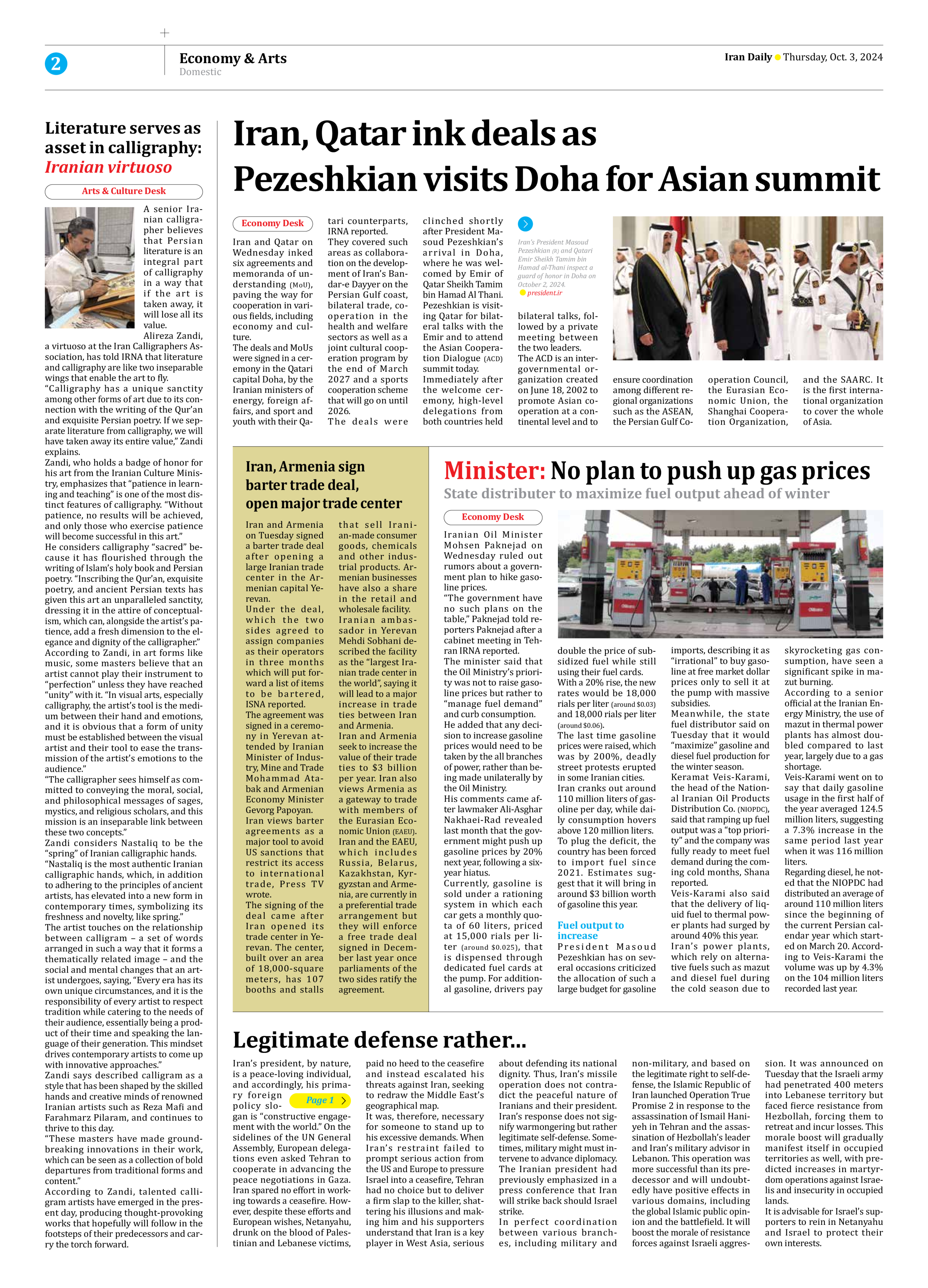
Literature serves as asset in calligraphy: Iranian virtuoso
A senior Iranian calligrapher believes that Persian literature is an integral part of calligraphy in a way that if the art is taken away, it will lose all its value.
Alireza Zandi, a virtuoso at the Iran Calligraphers Association, has told IRNA that literature and calligraphy are like two inseparable wings that enable the art to fly.
“Calligraphy has a unique sanctity among other forms of art due to its connection with the writing of the Qur’an and exquisite Persian poetry. If we separate literature from calligraphy, we will have taken away its entire value,” Zandi explains.
Zandi, who holds a badge of honor for his art from the Iranian Culture Ministry, emphasizes that “patience in learning and teaching” is one of the most distinct features of calligraphy. “Without patience, no results will be achieved, and only those who exercise patience will become successful in this art.”
He considers calligraphy “sacred” because it has flourished through the writing of Islam’s holy book and Persian poetry. “Inscribing the Qur’an, exquisite poetry, and ancient Persian texts has given this art an unparalleled sanctity, dressing it in the attire of conceptualism, which can, alongside the artist’s patience, add a fresh dimension to the elegance and dignity of the calligrapher.”
According to Zandi, in art forms like music, some masters believe that an artist cannot play their instrument to “perfection” unless they have reached “unity” with it. “In visual arts, especially calligraphy, the artist’s tool is the medium between their hand and emotions, and it is obvious that a form of unity must be established between the visual artist and their tool to ease the transmission of the artist’s emotions to the audience.”
“The calligrapher sees himself as committed to conveying the moral, social, and philosophical messages of sages, mystics, and religious scholars, and this mission is an inseparable link between these two concepts.”
Zandi considers Nastaliq to be the “spring” of Iranian calligraphic hands.
“Nastaliq is the most authentic Iranian calligraphic hands, which, in addition to adhering to the principles of ancient artists, has elevated into a new form in contemporary times, symbolizing its freshness and novelty, like spring.”
The artist touches on the relationship between calligram – a set of words arranged in such a way that it forms a thematically related image – and the social and mental changes that an artist undergoes, saying, “Every era has its own unique circumstances, and it is the responsibility of every artist to respect tradition while catering to the needs of their audience, essentially being a product of their time and speaking the language of their generation. This mindset drives contemporary artists to come up with innovative approaches.”
Zandi says described calligram as a style that has been shaped by the skilled hands and creative minds of renowned Iranian artists such as Reza Mafi and Farahmarz Pilaram, and continues to thrive to this day.
“These masters have made groundbreaking innovations in their work, which can be seen as a collection of bold departures from traditional forms and content.”
According to Zandi, talented calligram artists have emerged in the present day, producing thought-provoking works that hopefully will follow in the footsteps of their predecessors and carry the torch forward.







